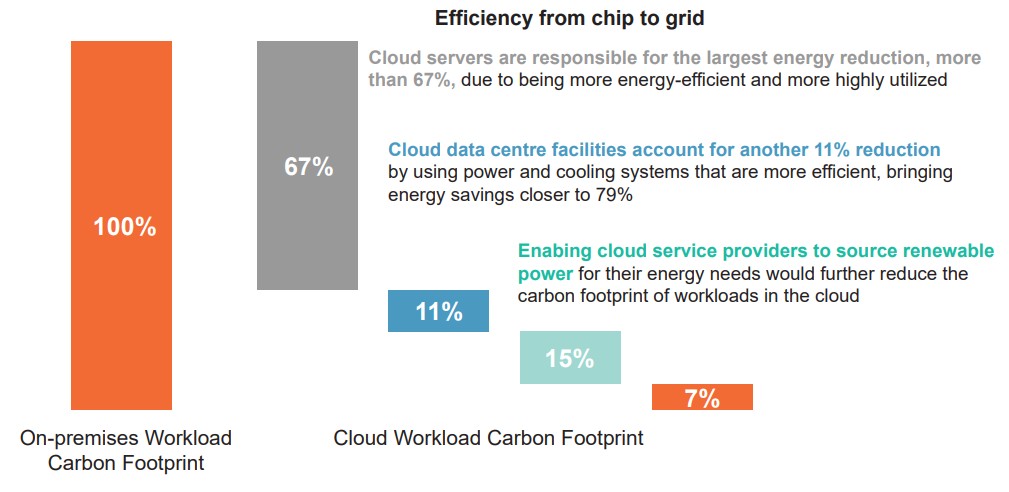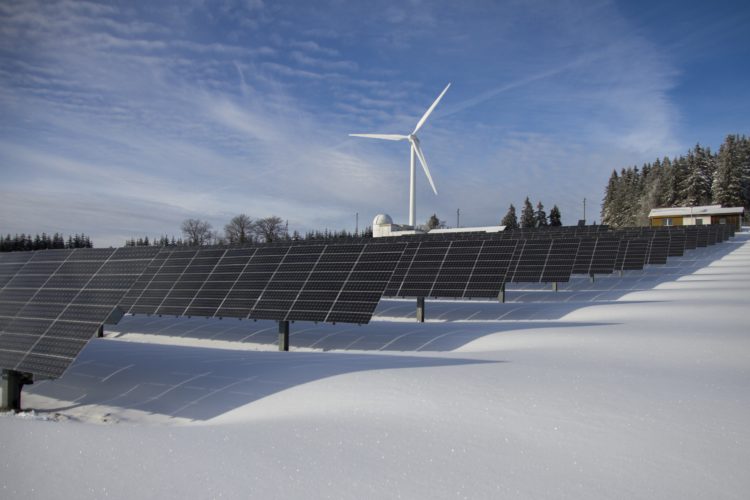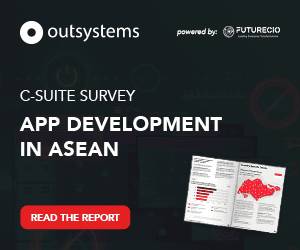There is no single action that leads to carbon neutrality but a combination of strategies that organisations can collectively implement to affect a big difference. Amazon has seen growing business opportunities in e-commerce and cloud technology due to the COVID-19 pandemic but has proactively reduced its carbon footprint as part of its enduring commitment to decarbonization.
These reductions in the carbon activity of its business activities require investments in large-scale, long-term decarbonization solutions such as global renewable energy projects. However, they have resulted in a decrease in absolute emissions from purchased electricity.
In an interview, FutureCIO spoke to Ken Haig, head of energy and sustainability policy, APAC & Japan at AWS, to ask how organisations can leverage cloud technologies to reduce total greenhouse gas emissions in the longer term.
What are the goals that AWS has committed to focusing on in the race to fight climate change?
Ken Haig: We are focused on our climate pledge goal, based on a pledge call that we co-founded in 2019. This was a goal for Amazon to meet the Paris Agreement targets 10 years early. This was co-founded with global optimism. This is a pledge that we have made to meet the agreement targets 10 years early, joined by over 300 Other companies who share the same goal.
How do you see cloud driving deeper decarbonisation across the business?
Ken Haig: For most of our customers the IT workloads are one very small percentage of their overall carbon footprint. There's a lot more that we can do with sustainable infrastructure, and energy efficiency but on this renewable energy goal. As a part of our climate pledge goal, we have a goal to reach 100% renewable energy in 2025.

"This is not easy, particularly in the Asia Pacific region, to unblock the regulatory hurdles to meet our 100% renewable energy goal. The Asia-Pacific region is one of the hardest places to purchase renewable power because there is a very limited supply on the grid."
Ken Haig
What level of objectivity does AWS practice and how do you ensure there is no greenwashing in all its reporting? What part do independent vendors play in validating these measures?
Ken Haig: First, decarbonisation - where we can in our business, such as through our energy use, operations, and everything else we can do to decarbonise directly.
The second is around regular reporting. Amazon does this annually through our sustainability report.
The third is around credible offsets. And so, we've pledged not to use offsets. As our first strategy, we focus on direct decarbonisation, where credits become necessary for the hardest to evade emissions. We've pledged to only look at those that are credible, permanent, socially responsible, and implementable within the timeframe of our climate pledge commitment.
With our chip-to-grid approach, we start by innovating at the chip level and investing in efficient processors available in the market. The Graviton 3 processors are 60% more efficient than any available instances on the market today, providing up to 25% better computer performance - two times faster performance compared to its predecessor and 50% more memory bandwidth.
And then we build that up our server and rack design, how we can dynamically allocate workloads, across customers' workloads. All of this adds up to quite a bit of efficiency. The 451 Research report that came out last year surveyed 500 enterprises and public sector organisations across the Asia Pacific. It revealed that there was a nearly 80% reduction in the energy required to run their IT workloads and a corresponding reduction in the carbon footprint with running those workloads right.

Source: 451 Research/S&P Global Market Intelligence
Just from the energy efficiency increase alone moving the workloads from on-premises data centres into the cloud - is a huge step for our customers.
How does AWS help its clients visualise and monitor their workload efficiency, carbon emissions and productivity across so many sectors?
Ken Haig: Dashboard tools that our customers can use include, AWS Lake formation and the Amazon Sage Maker to understand and optimise the workloads in our cloud and lower their overall environmental footprint.
We have a whole team of solution architects that will work with our customers, to help them architect their workloads most efficiently in the cloud and help their customers, save money and increase reliability.
We have a shared responsibility for security by providing a safe infrastructure. We work with our customers to help secure their workloads so that their security itself is optimised. Similarly, we also provide that sustainable infrastructure across water consumption and embodied that commitment to carbon investments.
What are some of the ways that big companies do to monitor their greenhouse gas emissions and effectively invest in tools to bring their carbon footprint down today?
Ken Haig: The AWS carbon footprint tool, for example, automatically calculates your footprint for the entire portfolio of services and regions. Its dashboard displays a trend analysis to understand historically how workloads have improved based on the optimizations as well as provides a forecast of future emissions.
As we get closer to our 100% renewable energy goal, you're going to see the carbon footprint associated with your workloads go down even further. Finding ways to create low-carbon concrete in the manufacturing process is actually an important step.
We use carbon cure concrete in the foundations of our newly built data centres by literally putting low carbon concrete into the foundations of our data centres. We do the same thing with steel, electric arc steel that goes into the facilities where we build steel and concrete.
Both are large sources of embodied carbon. We try to use our investments to drive greater market availability of low-carbon steel and low-carbon concrete. It is important for customers to realise that there is a lot of effort to further decarbonize all our infrastructure and operations that go behind the scenes.
We know the carbon footprint involves complex data analysis. Despite its complexity, what has been the growing concern surrounding ESG reporting?
Ken Haig: The absence of a universal standard and the constant emergence of new criteria, and new data sources, make things really challenging. We have a whole bunch of tools available to help customers with ESG disclosure requirements.
So, it is not just for the carbon footprint but a bunch of tools to identify emissions throughout the value chain. It is an incredibly complex process to identify the sum of all emissions from production to the end sale, right through the value chain of any agricultural products.
In a recent discussion with Hanwha Systems, a provider and AWS partner in Korea, they did the same with identifying, tracking and accounting for emissions throughout the value chain. While it becomes more complex, there are more and more tools to help track these emissions.
Cloud really helps with integrating different data sets when there is a lot of information to crunch from an application. Using a text tracker helps our customers sort through all these long PDF forms, find the data they need, and then run the input into their systems for analysis using the ESG tools.
When we calculate our own carbon footprint, we use the greenhouse gas protocol, which is a common tool. It is published by the World Resources Institute and the World Business Council for Sustainable Development.
The GHG Protocol is the industry standard that measures carbon accounting and reporting across all organisations. Then there is a third-party verification of all our reporting as well, which is part of our climate pledge.
We are working to develop opportunities for nature-based solutions. For example, we also have a US$100 million right now Climate Fund, that's focused on nature-based solutions. We are involved in the Leaf Coalition, which is a public-private partnership, to mobilise US$1 billion to protect the world's tropical rainforest.
We have worked with over 300 companies who have signed on to the climate pledge, in making the same commitments to direct decarbonisation transparency.
Regulation is an increasingly important area and in Europe, it is impacting how customers report ESG data. The UK Government has a task force on climate-related financial disclosures. European regulation is also now underway. The SEC in the US focuses on providing more granular ESG data reporting for listed companies. We are seeing this in the Asia Pacific region as well.
What are some of the success stories in Southeast Asia that you can pin down that are relatable to share?
Ken Haig: There are examples of startups who have built their business on AWS, and they're using the cloud to really focus on sustainable business development in Southeast Asia.
RekoSistem, in Indonesia, is developing an end-to-end, zero waste management business, using cloud tools to scale operations quickly. In a report by CNA, waste management has been a challenge in Indonesia, during the pandemic as more people stayed home. This meant more deliveries of food and other essentials.
With disposable food delivered to people's homes, there is a massive increase in waste management needs, and they found interesting ways of how the ecosystem uses the cloud to scale up operations quickly.
A startup in India, WEGoT Utility Solutions, has developed solutions using remote sensing technologies to find water leakages, in commercial industrial operations. They can then pinpoint areas for improvement, right and they've literally saved billions of litres of water from going down the drain, simply by focusing their investments on putting those remote sensors across systems, identifying those areas for improvement.
Without spending upfront capital investment in building their own data centres, they are leveraging the cloud to take all that data from those remote sensors to run the analytics identifying areas to be fixed, and then sending teams to fix those.
Any closing thoughts on driving forward?
Ken Haig: It is important to make sure that we are on track toward meeting our own net zero carbon goals and other sustainability targets. But what is more important is really what we can do to drive greater outcomes for our customers - I think that must be the biggest contribution that we can make at AWS.




